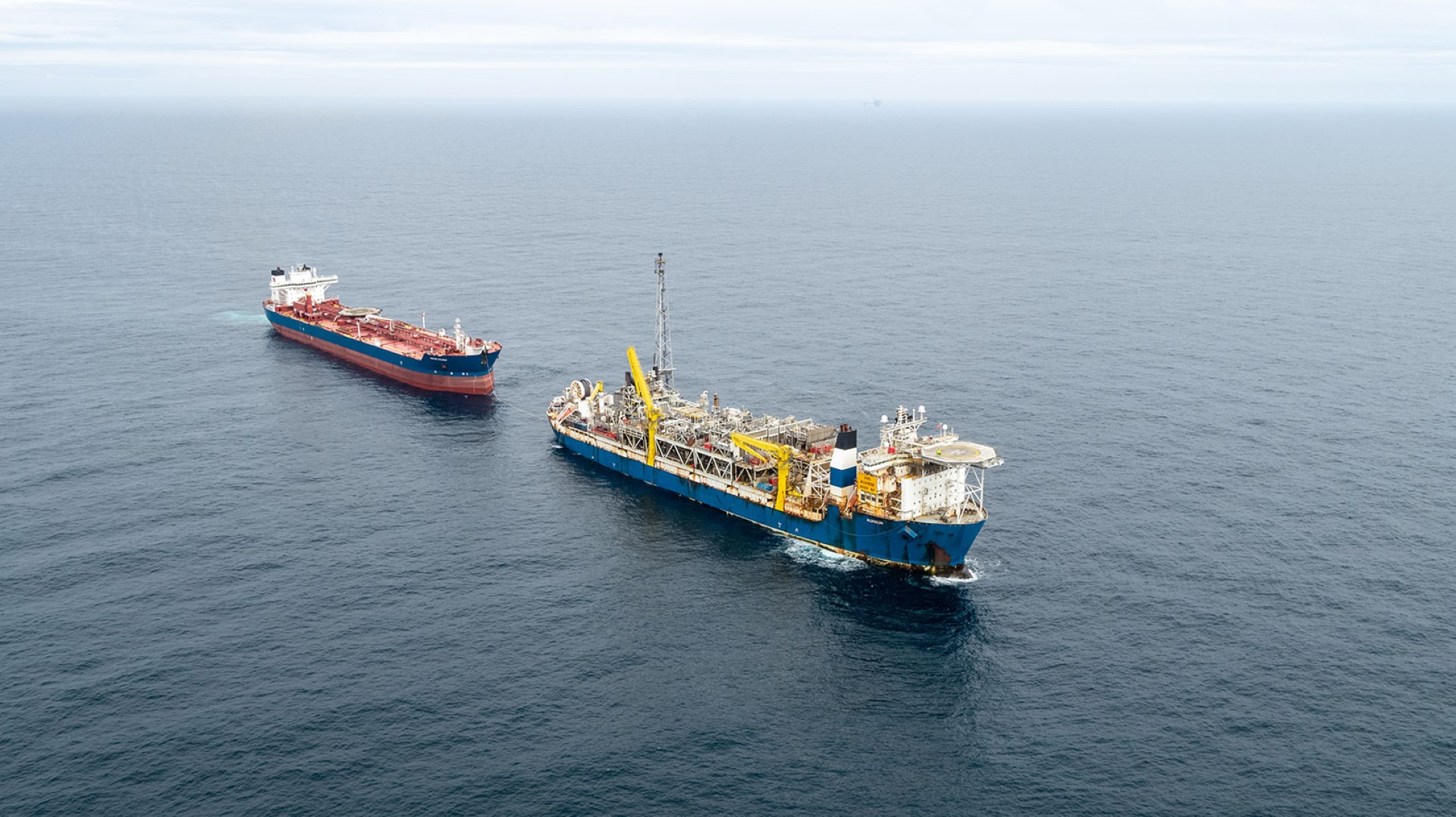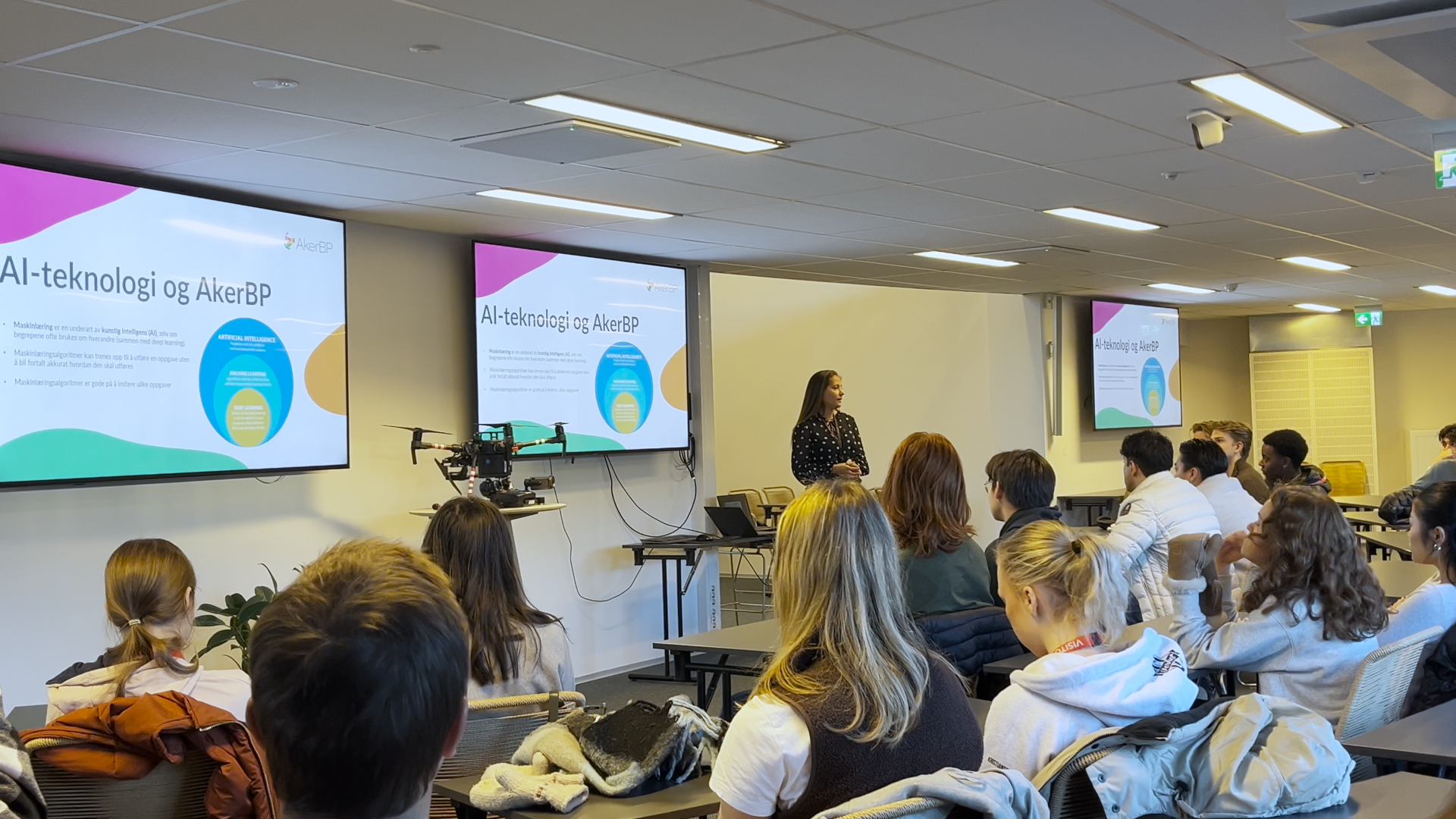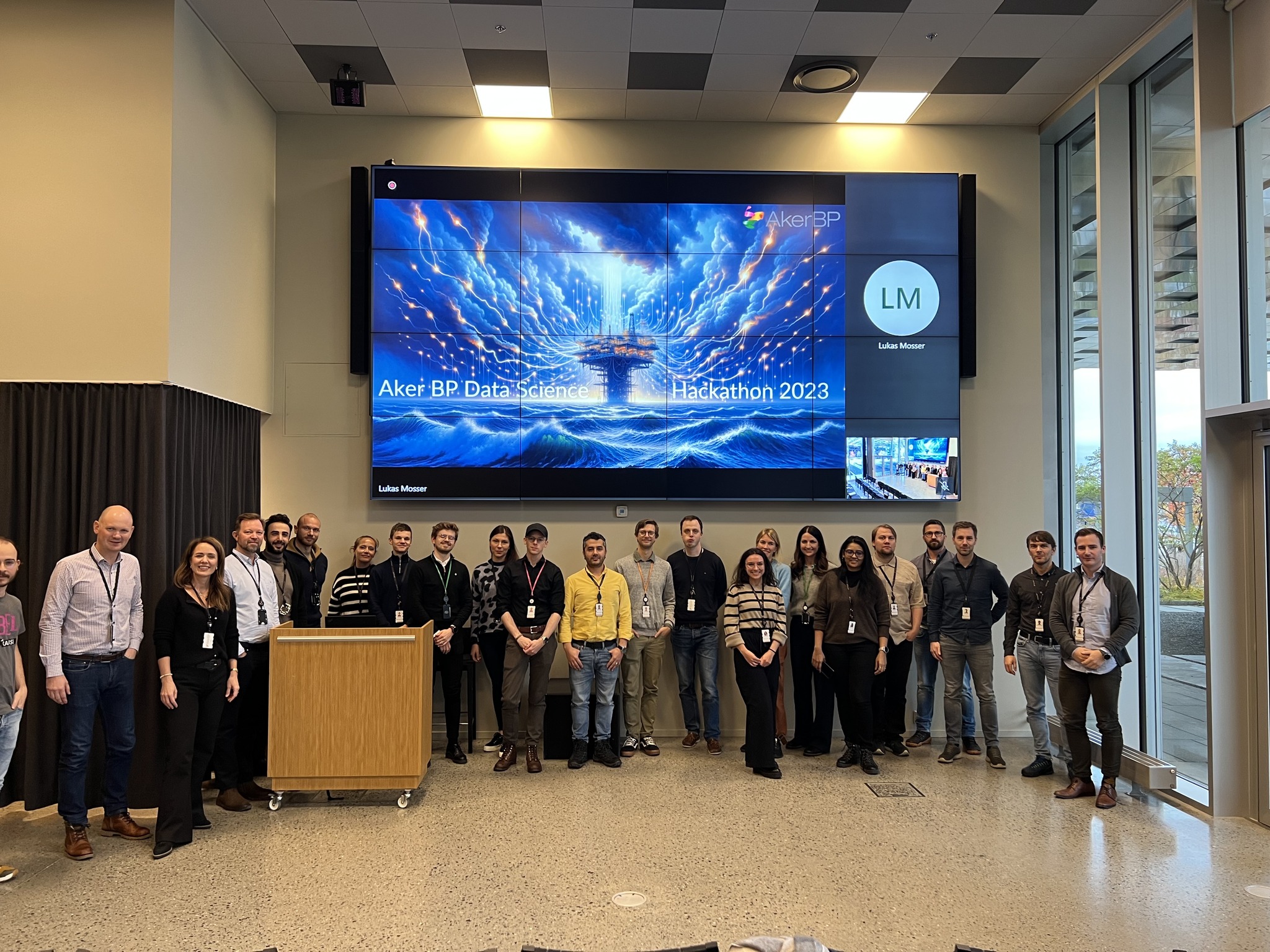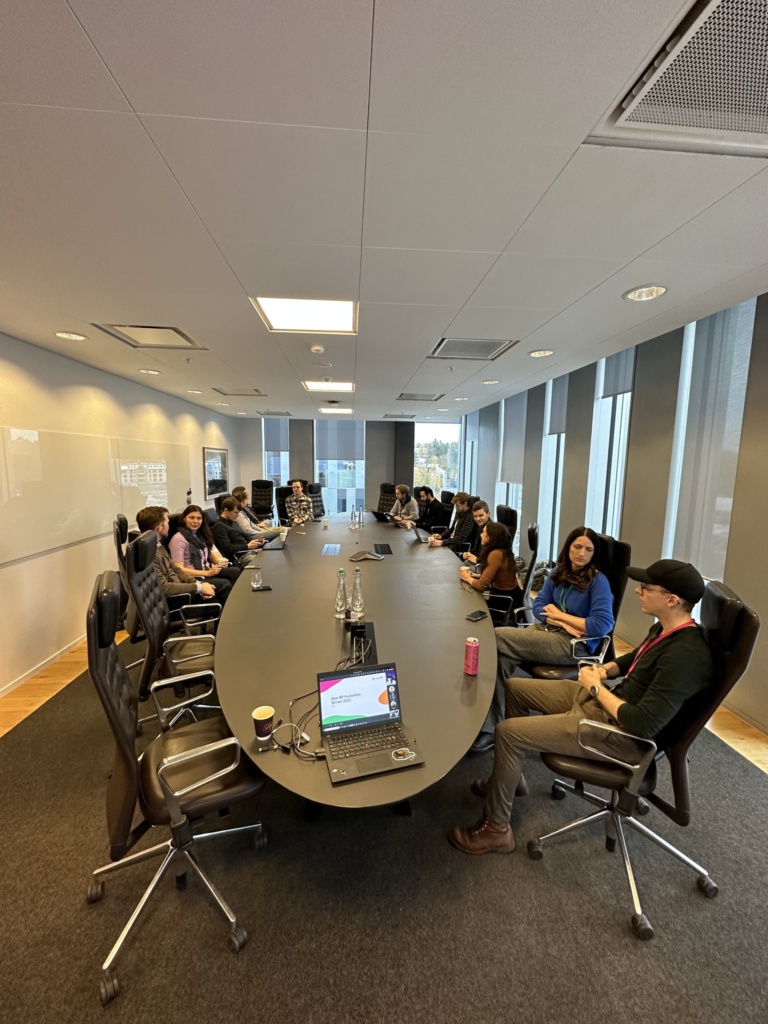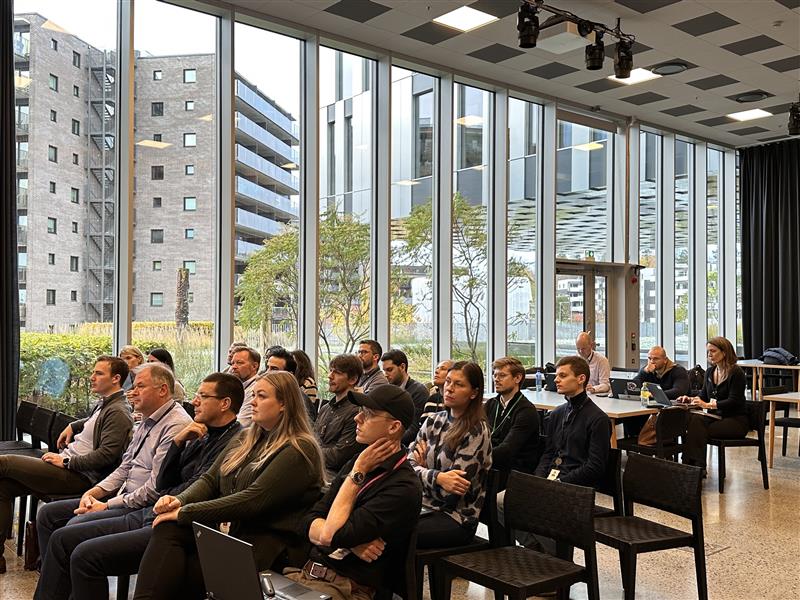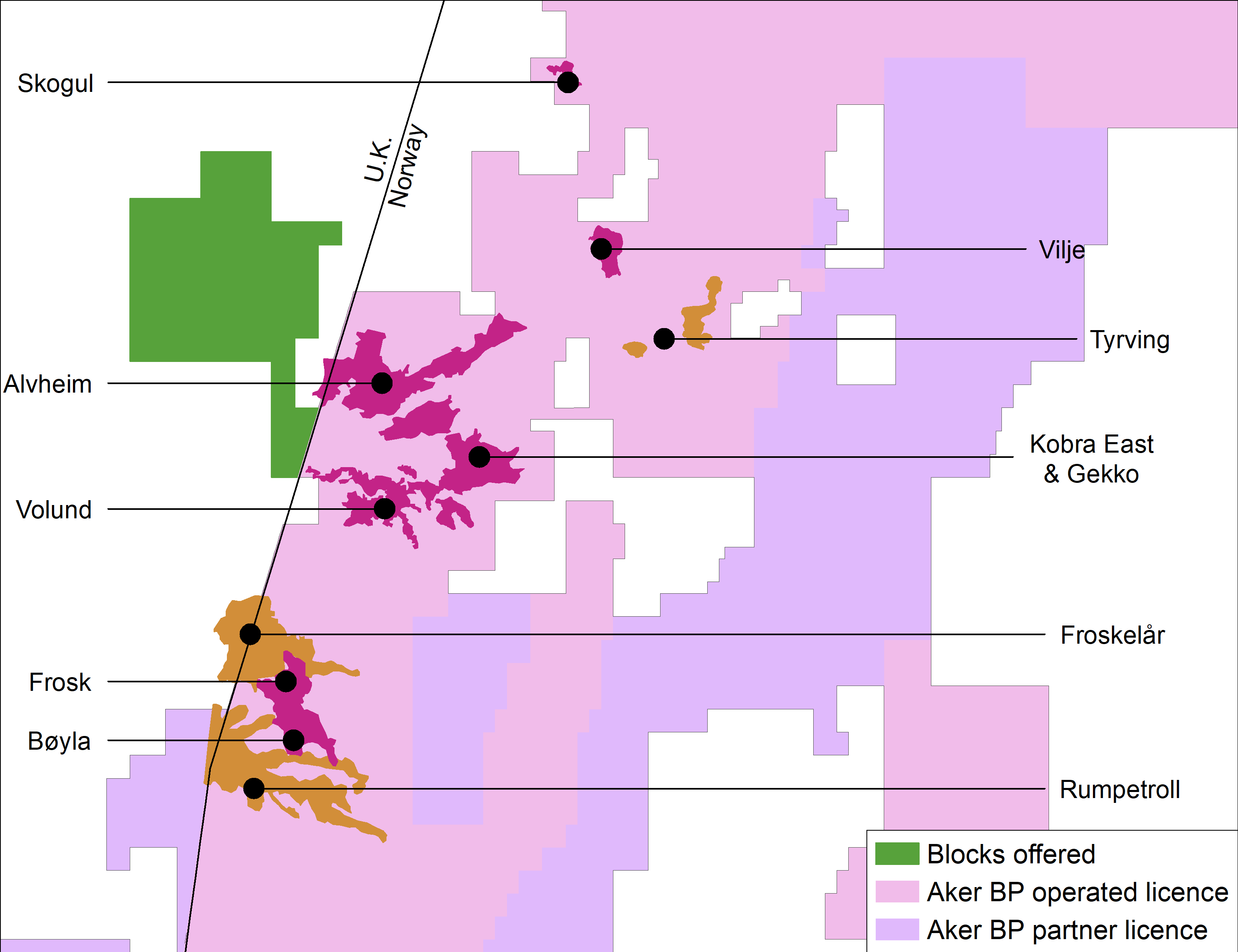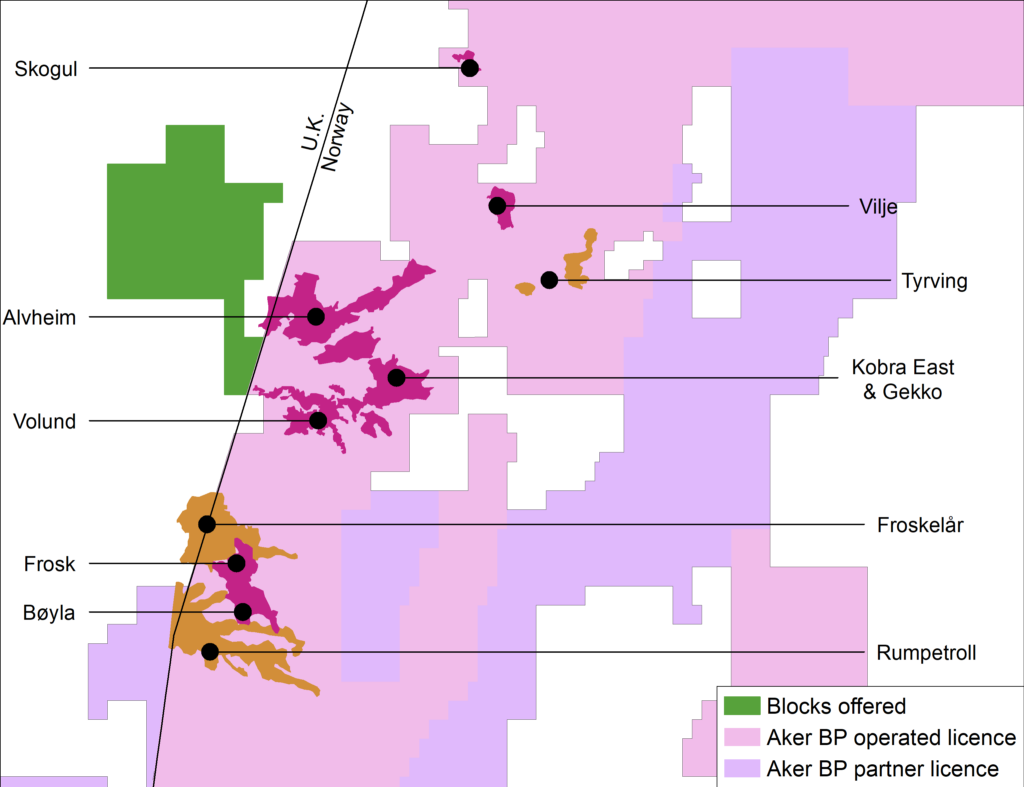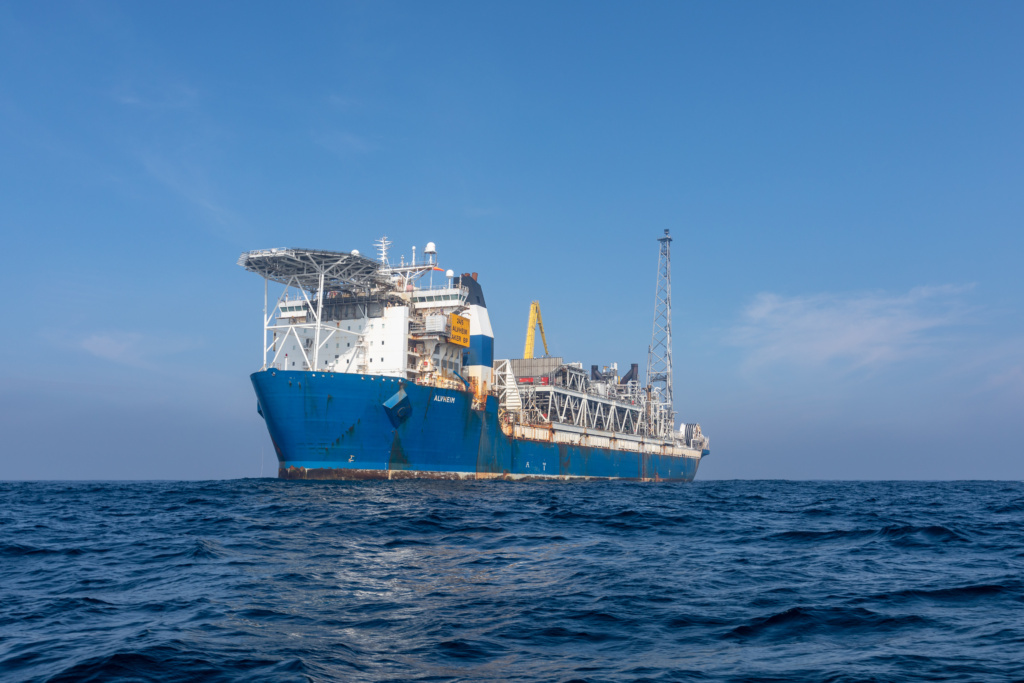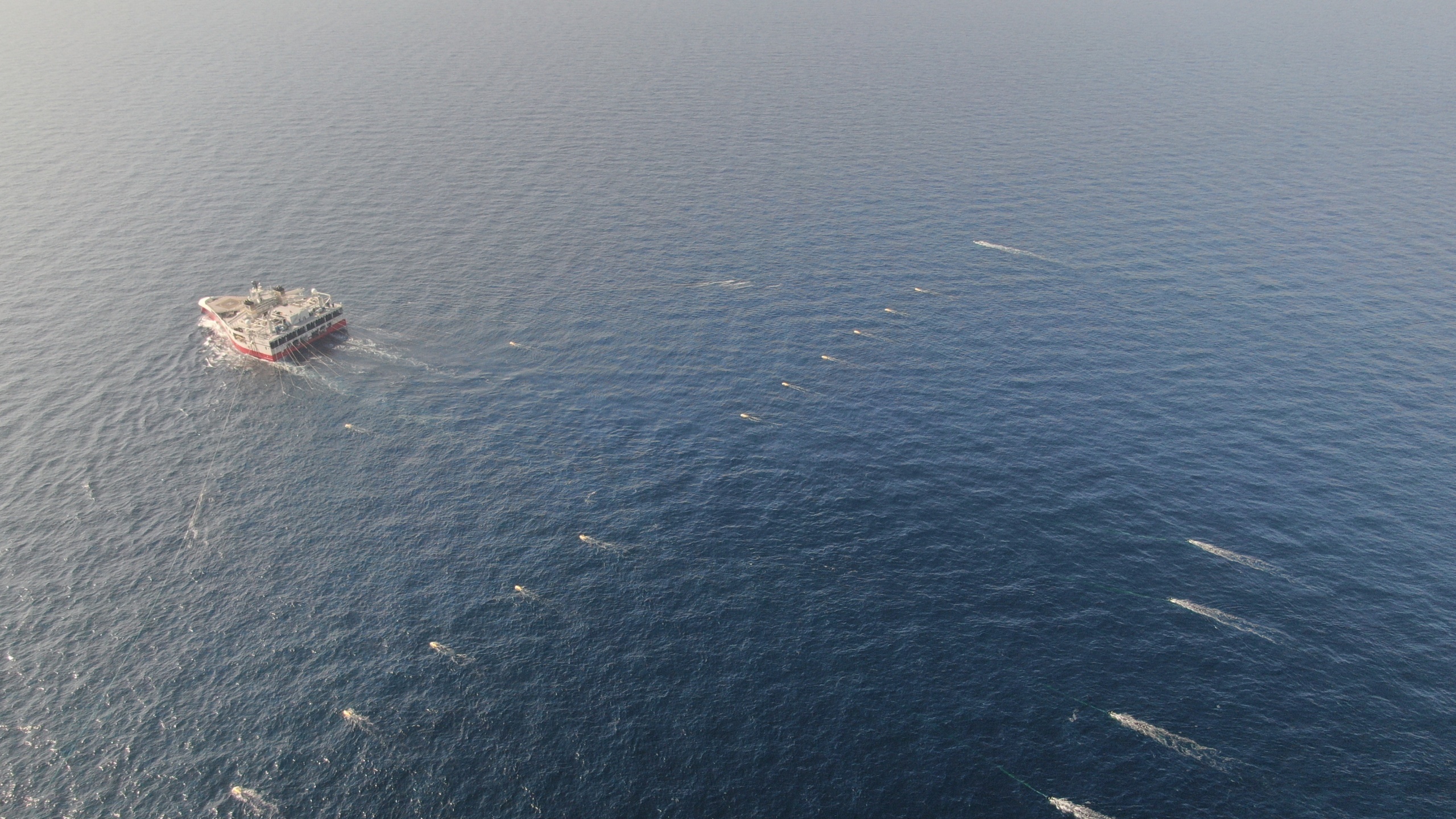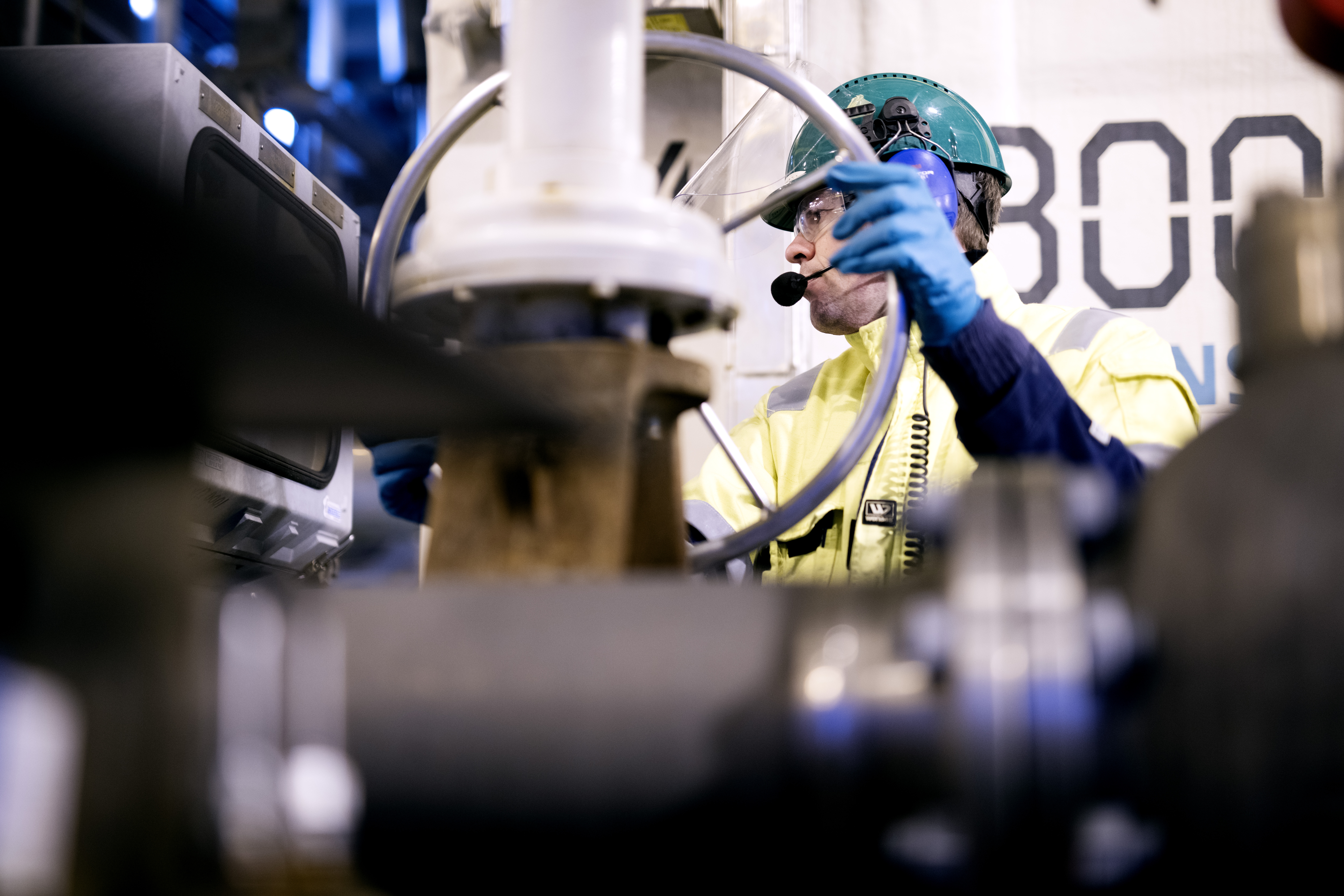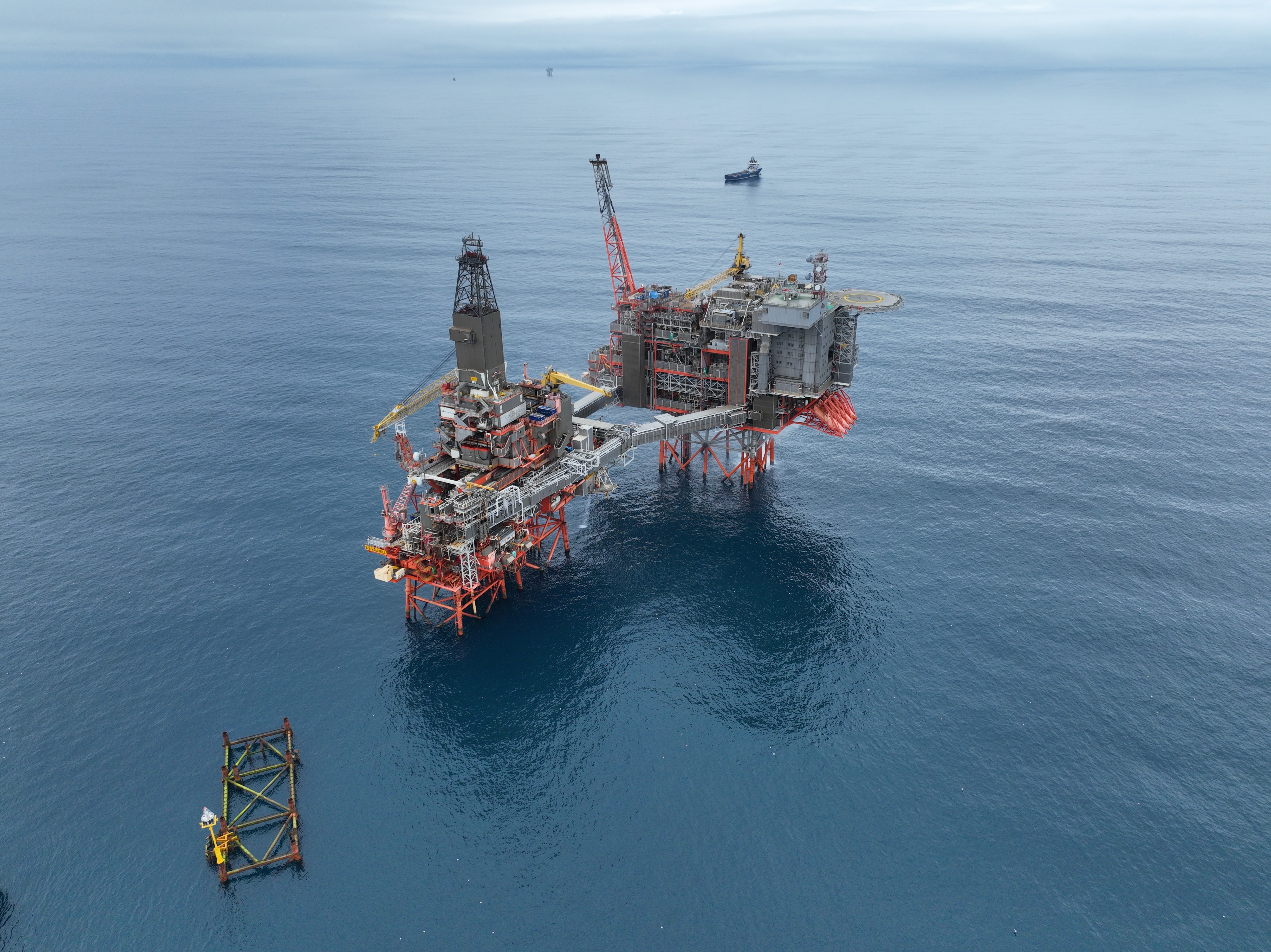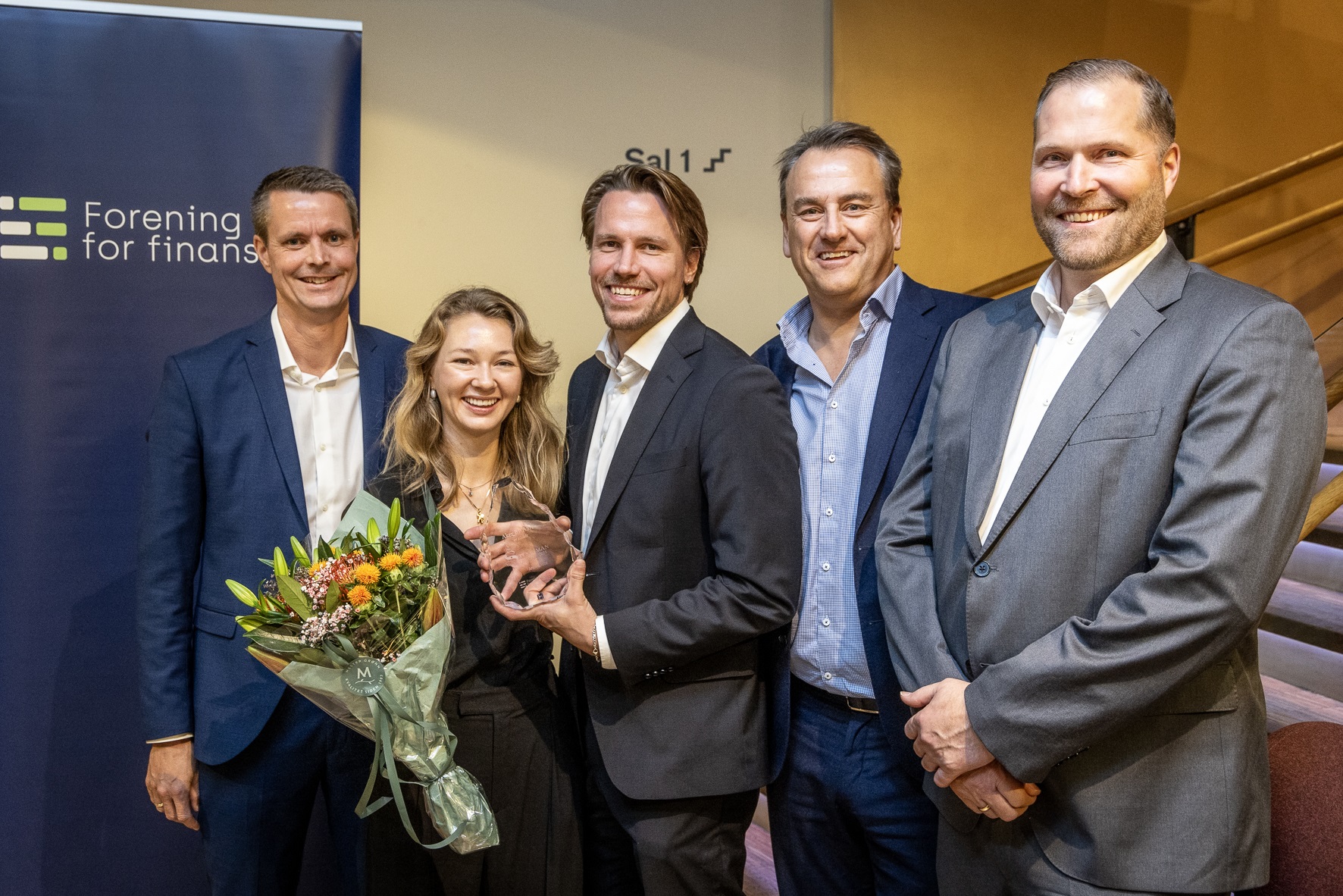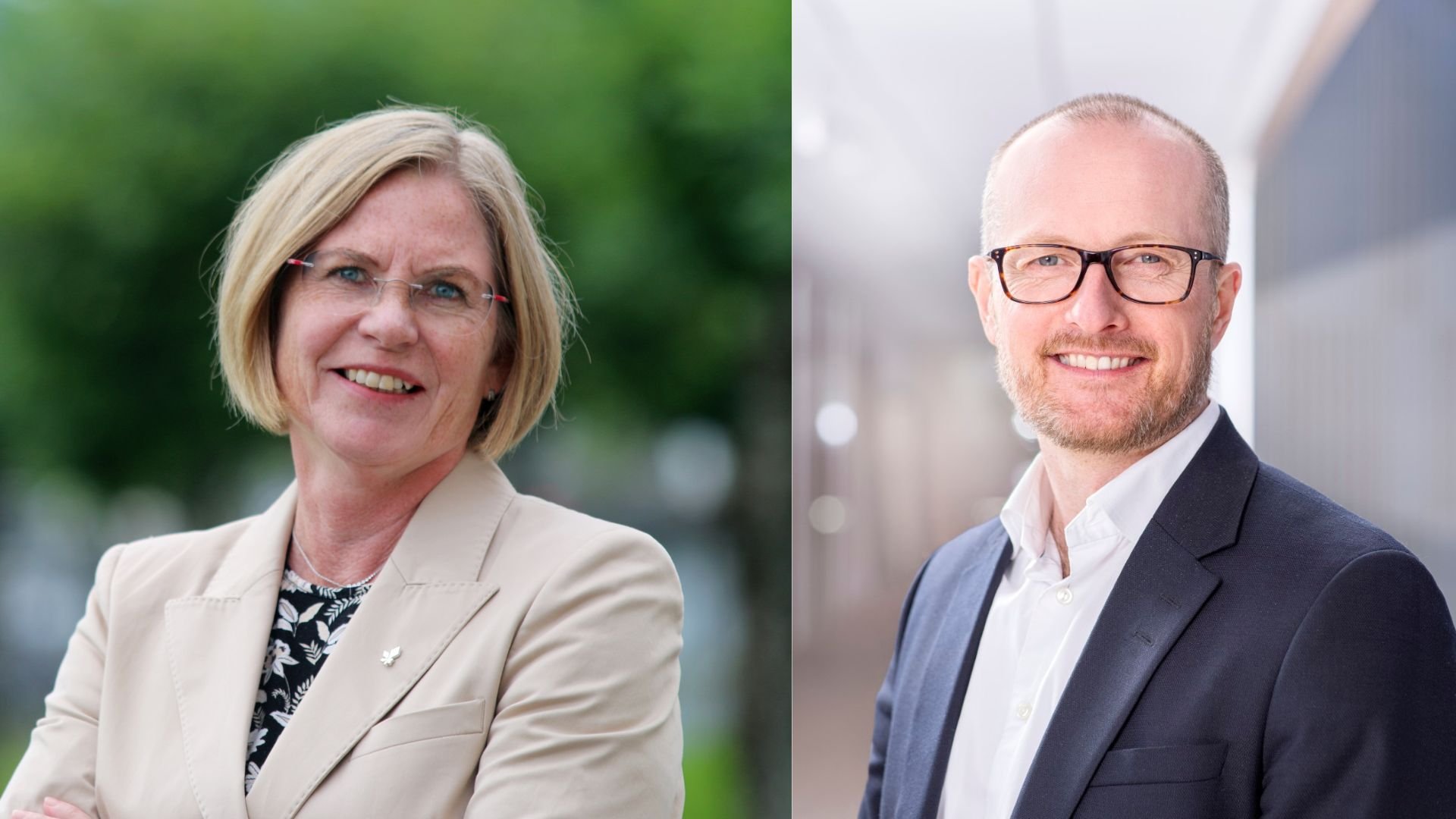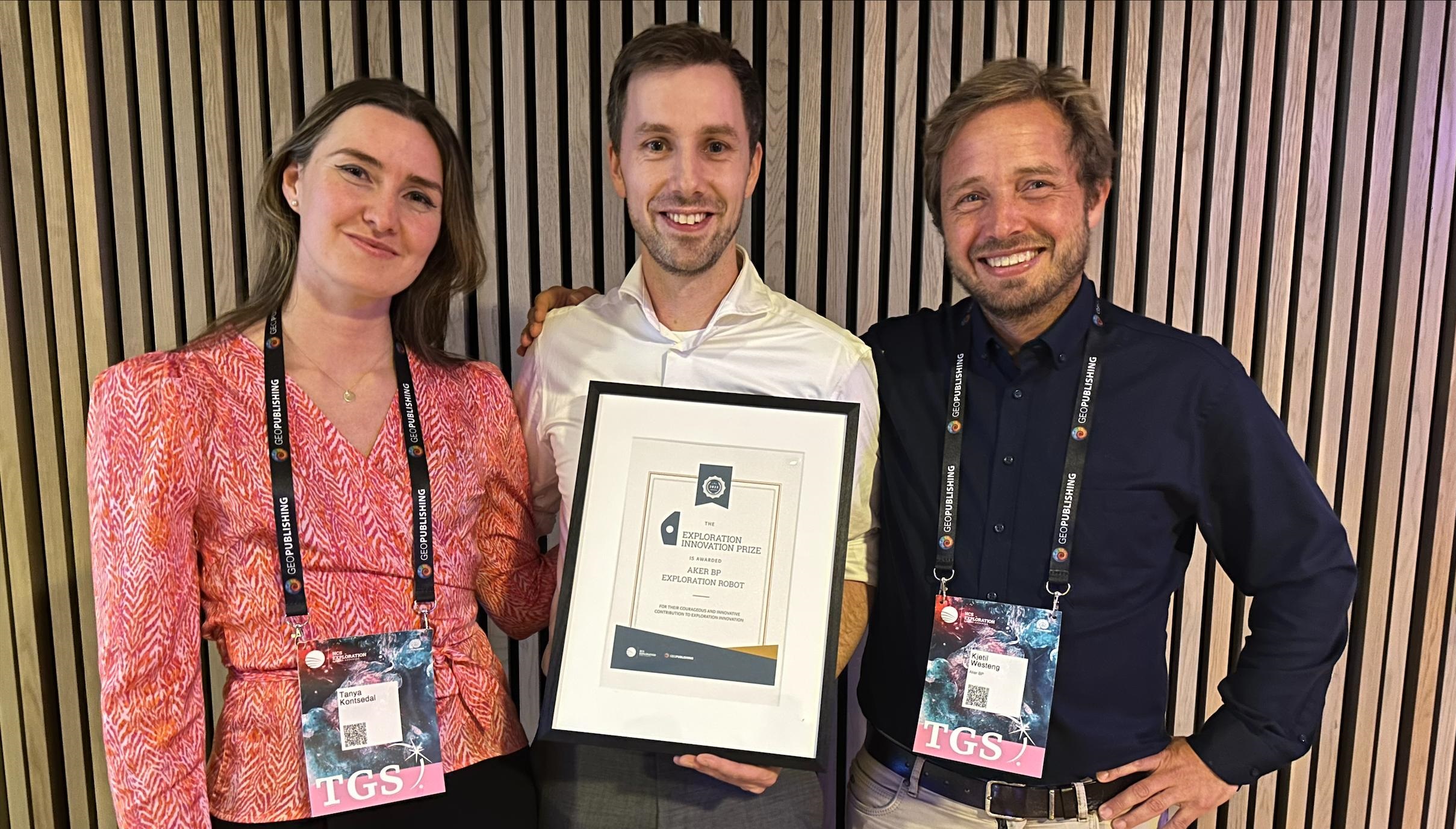When satellite images revealed oil on the sea surface at the Alvheim field, Aker BP reacted immediately by closing all necessary valves in order to stop the discharge. The subsequent handling of oil on the sea surface confirms that we have effective oil spill preparedness on the Norwegian shelf.
The oil spill from the Alvheim production vessel on 29 November occurred in connection with starting up the field following an unplanned production shutdown, where one well was producing. A preliminary estimate indicated a discharge of 51 m3 of oil through the produced water outlet.
The incident was reported to the authorities, and Aker BP’s emergency response organisation mobilised alongside the Norwegian Clean Seas Association for Operating Companies (NOFO*) and the Norwegian Coastal Administration to deal with the oil on the sea surface.
*NOFO is responsible for oil spill preparedness on behalf of the operating companies on the Norwegian shelf, NOFO – Home
NOFO and the Norwegian Coastal Administration chose to use the oil spill response measure known as mechanical degradation, where the propellers on the standby vessel Esvagt Stavanger mixed the oil down into the water column until it dissolved. Satellite and aerial surveillance measures were also initiated, in addition to the standby vessel’s oil radar.
The oil spill response measure proved to be highly effective and the oil slick was significantly reduced in size as early as the next day. The Norwegian Coastal Administration, in consultation with NOFO and Aker BP, decided to end the operation the next day, on 1 December. At this point, no oil was visible on the sea surface in satellite images and flyovers. The Norwegian Coastal Administration and NOFO have not reported that any harm has been caused to the environment (birds, fish, larvae).
“This oil spill response operation has been effective and was characterised by very good teamwork between the involved contributors,” says Ine Dolve, Aker BP’s SVP Alvheim.
“We’ve started an investigation of the incident aimed at learning and strengthening our barriers to avoid any similar incidents in the future,” Dolve adds.
Aker BP’s goal is to carry out all operations, drilling campaigns and projects with the highest possible HSE standards and without undesirable incidents.
“At the same time, we need robust and effective emergency preparedness in order to minimise consequences in the event that an undesirable incident should nevertheless occur. Our cooperation with NOFO and the Norwegian Coastal Administration shows that the Norwegian shelf has sound and effective oil spill preparedness in place, should the need arise,” says Marit Blaasmo, Aker BP’s SVP People & Safety.
